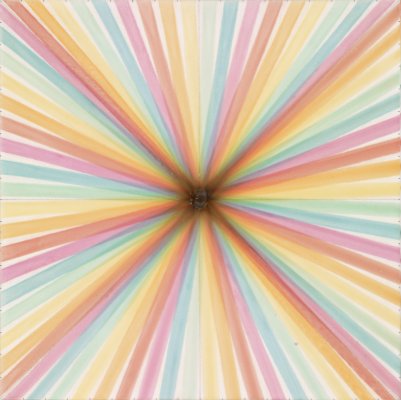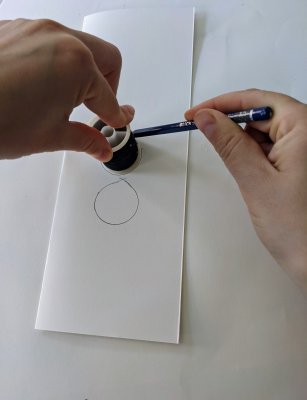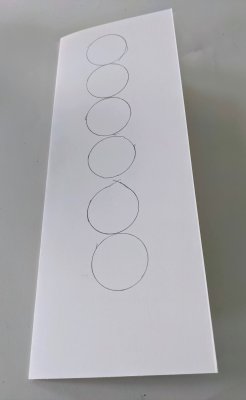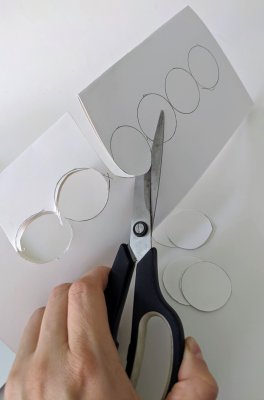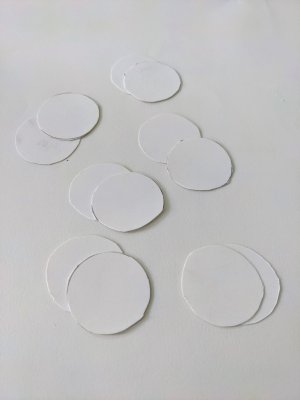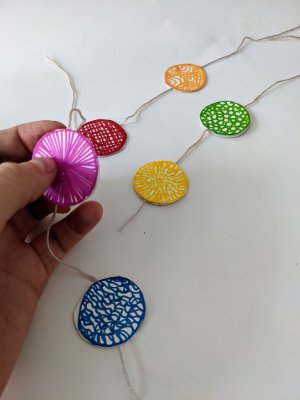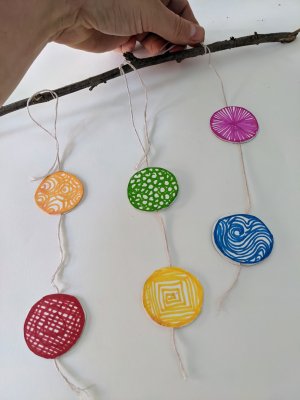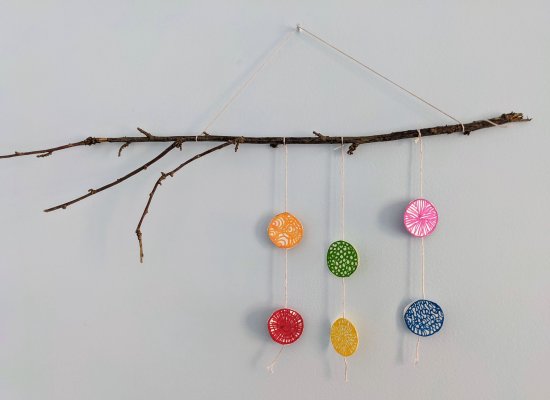Getting Started
- How many colors do you see in a rainbow?
- How many colors can you see outside your window in nature?
- How many lines can you think of—zigzag, wavy, etc.?
- How many different patterns can you think of, or find, in nature?
Materials
- Large sheets of paper (white paper works best)
- Glue (a glue stick works best)
- String (string, thread, yarn, or even floss)
- Scissors
- A stick (this can be from outside or you could use a chopstick instead)
- Markers, colored pencils, or crayons
- Small round objects to trace
